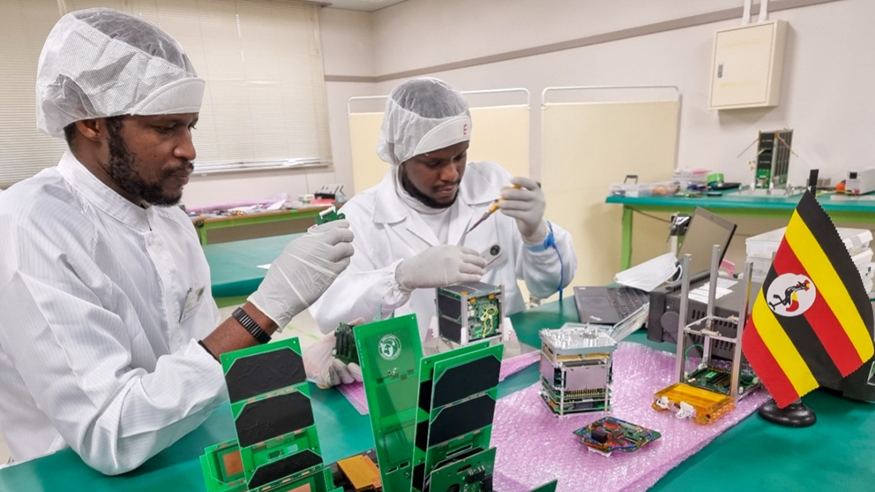Introduction

Uganda is steadily carving out a role in East Africa’s space ecosystem by investing in academic research and scientific training. Although the country lacks a formal space agency, it has made significant progress through its universities and research institutions. These efforts are laying the foundation for a future space program rooted in science, education, and innovation. By emphasizing research over infrastructure, Uganda is contributing to regional knowledge and capacity in space science—positioning itself as a thought leader in East African space development.
University-Led Space Research in Uganda
Ugandan universities, particularly Makerere University, are at the heart of the country’s space science journey. Makerere has led several high-impact initiatives, including satellite systems engineering, remote sensing applications, and astronomy studies. Its College of Engineering, Design, Art and Technology (CEDAT) has developed partnerships with institutions in Japan, South Korea, and Europe, enabling Ugandan students and researchers to engage in satellite development and related disciplines.
In 2022, Uganda successfully launched its first satellite, PearlAfricaSat-1, in collaboration with Japan’s Kyushu Institute of Technology. Although the satellite was assembled and launched abroad, much of the technical groundwork was done by Ugandan engineers—an important milestone in building domestic expertise.
Growing Academic Capacity and Collaboration
Academic interest in space science is growing rapidly in Uganda. New programs in astrophysics, aerospace engineering, and data analytics have emerged across several institutions. These programs are focused not only on space hardware but also on software applications such as Earth observation, weather forecasting, and climate monitoring.
Uganda’s academic institutions are also building research collaborations across East Africa. For example, Makerere University regularly partners with universities in Rwanda and Kenya on joint studies and knowledge-sharing projects. Such partnerships are helping to create a pan-East African research community focused on space and atmospheric science.
Scientific Applications with Local Impact
Ugandan researchers are applying space science to real-world problems. Satellite data is being used to study agricultural trends, track deforestation, and monitor water resources across Uganda’s diverse landscapes. Universities are developing localized geospatial tools to help policymakers make informed decisions in areas like urban planning and disaster response.
These applications are enhancing national resilience and sustainability. For instance, space-derived climate models have been used to predict and mitigate the effects of drought in northeastern Uganda. This kind of science-driven policymaking demonstrates the practical value of academic space research in addressing Uganda’s development needs.
Capacity Building Through International Support
Uganda’s academic advancements in space science have been supported by international partners. The Joint Global Multi-Nation Birds Satellite Project, which Uganda joined through PearlAfricaSat-1, provided funding, training, and access to satellite launch platforms. UNESCO and the International Astronomical Union have also provided research grants and equipment to support space education in Ugandan schools and universities.
These collaborations have helped Ugandan researchers access advanced laboratories, mentorship, and global networks—resources that are often unavailable domestically. The emphasis on capacity building ensures that Uganda’s progress is sustainable and locally driven.
Challenges and Future Prospects
Despite its achievements, Uganda still faces several obstacles. Limited funding, inadequate infrastructure, and a shortage of specialized faculty remain barriers to scaling up academic research in aerospace fields. Many promising graduates also leave the country for better opportunities abroad, contributing to a brain drain that hampers continuity.
Nonetheless, Uganda is optimistic about the future. There are ongoing discussions about establishing a national space policy and potentially creating a dedicated space agency. In the meantime, academic institutions remain the primary drivers of Uganda’s space ambitions. With continued investment in training, infrastructure, and regional collaboration, Uganda is well-positioned to grow its influence in East African space science.
Conclusion
Uganda’s path to space is being paved through academic research and regional cooperation. By investing in universities and fostering global partnerships, the country is building a strong scientific foundation for future space exploration. While challenges remain, Uganda’s research-driven approach offers a scalable and sustainable model for space development in resource-constrained environments. As space becomes increasingly central to development and security, Uganda’s contributions to East African space science are both timely and impactful.


